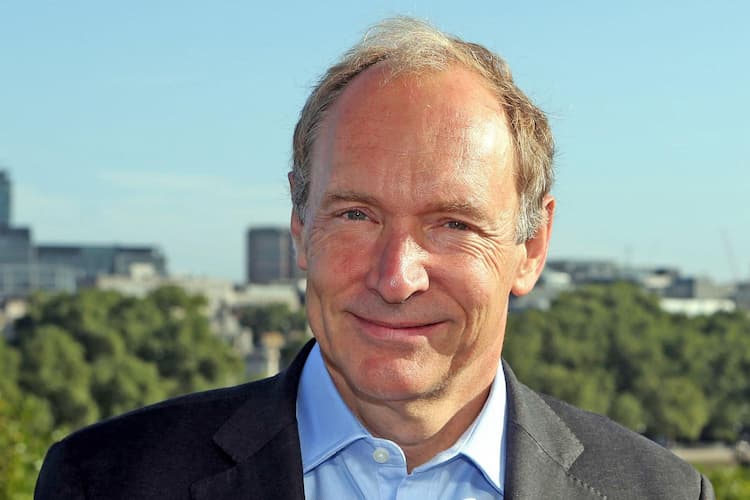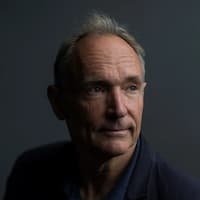Tim Berners-Lee Biography
Tim Berners-Lee, an English computer scientist, is best known for inventing the World Wide Web, HTML markup language, URL system, and HTTP. He is a professorial research fellow at the University of Oxford and emeritus professor at the Massachusetts Institute of Technology.
How old is Tim Berners-Lee? – Age
He is 68 years old as of 8 June 2023. He was born in 1955 in London, United Kingdom. His real name is Timothy John Berners-Lee.
Tim Berners-Lee Family – Education
Berners-Lee was born in London on June 8, 1955, as the son of mathematicians and computer scientists Mary Lee Woods and Conway Berners-Lee. His parents, both from Birmingham, collaborated on the Ferranti Mark 1, the first commercially produced computer. His paternal grandmother hailed from Winnipeg, Canada. He has three younger siblings, including Mike, who is an ecology and climate change management professor.
Berners-Lee attended Sheen Mount Primary School before moving on to Emanuel School (a direct grant grammar school) from 1969 to 1973. As a child, he was an avid train enthusiast who learned about electronics by fiddling with a model railway. From 1973 to 1976, he attended The Queen’s College, Oxford, where he earned a first-class BA in physics. While there, he built a computer out of an old television set that he had bought from a repair shop.
Tim Berners-Lee Wife – Children
They had two children and got divorced in 2011. He married Rosemary Leith in 2014 at the Chapel Royal, St. James’s Palace in London. Leith is a Canadian Internet and banking entrepreneur who also serves as a founding director of Berners-Lee’s World Wide Web Foundation. The couple also work together on venture financing to help artificial intelligence firms.
Tim Berners-Lee Net Worth
He has an estimated net worth of $60 million.
Tim Berners-Lee Articles
In an October 2009 Times story, Berners-Lee conceded that the first pair of slashes (“//”) in a web URL were “unnecessary”. He informed the newspaper that he could have easily created site addresses without the slashes. “There you go, it seemed like a good idea at the time,” he continued with a joking apology.
Tim Berners-Lee Career
Berners-Lee, a prestigious PC researcher, filled in as a specialist at Plessey and later joined D. G. Nash in 1978. He filled in as a self employed entity at CERN from June to December 1980, where he proposed an undertaking in view of hypertext to work with data dividing between scientists. He constructed a model framework named ENQUIRE to show this idea.

In the wake of leaving CERN, he worked at John Poole’s Picture PC Frameworks, Ltd, where he dealt with a “ongoing far off strategy call” project. In 1984, he got back to CERN as an individual. Berners-Lee’s proposition, which was acknowledged by his director, Mike Sendall, depended on the ENQUIRE framework. Robert Cailliau, who had freely proposed a hypertext framework at CERN, joined Berners-Lee in his endeavors to make the Internet. Berners-Lee planned and assembled the primary internet browser, WorldWideWeb, and the principal Web server, CERN HTTPd.
In December 1990, Berners-Lee distributed the principal site, which portrayed the Internet, on the CERN organization. The website gave a clarification of what the Internet was, the way individuals could go through a program and set a web server, and how to begin with your own site. In August 1991, Berners-Lee originally posted a public greeting for joint effort with the WorldWideWeb project on Usenet. In a rundown of 80 social minutes that formed the world, picked by a board of 25 prominent researchers, scholastics, essayists, and world pioneers, the creation of the Internet was positioned number one.
In 1994, Berners-Lee established the W3C at the Massachusetts Organization of Innovation, which contained different organizations that were ready to make norms and proposals to work on the nature of the Internet. Berners-Lee made his thought accessible uninhibitedly, with no patent and no sovereignties due. The Internet Consortium concluded that its principles ought to be founded on eminence free innovation, so they effectively could be taken on by anybody.
Berners-Lee partook in Twist Corp’s endeavor to create and advance the Twist programming language. In 2001, Berners-Lee turned into a supporter of the East Dorset Legacy Trust and acknowledged a seat in software engineering at the School of Gadgets and Software engineering, College of Southampton, Hampshire, to deal with the Semantic Web. In October 2009, Berners-Lee conceded that the underlying sets of slices (“//”) in a web address were “pointless” and that he might have planned web addresses without the slices.
In June 2009, then, at that point English top state leader Gordon Brown reported that Berners-Lee would work with the UK government to assist with making information more open and available Online, expanding on crafted by the Force of Data Team. Berners-Lee and Teacher Nigel Shadbolt are the two critical figures behind data.gov.uk, a UK government venture to open up practically all information obtained for true purposes free of charge reuse.
In November 2009, Berners-Lee sent off the Internet Establishment (WWWF) to crusade to “advance the Internet to engage mankind by sending off groundbreaking projects that form nearby ability to use the Internet as a mechanism for positive change.” He is one of the trailblazer voices for unhindered internet, pushing that ISPs ought to supply “network without any hidden obligations” and should neither control nor screen the perusing exercises of clients without their communicated assent.
Berners-Lee was respected as the “Designer of the Internet” during the 2012 Summer Olympics opening service and joined the leading body of counsels of start-up State.com. As of May 2012, he is leader of the Open Information Foundation, which he helped to establish with Nigel Shadbolt in 2012.
The Collusion for Reasonable Web (A4AI) was sent off in October 2013, and Berners-Lee is driving the alliance of public and confidential associations that incorporates Google, Facebook, Intel, and Microsoft. The A4AI tries to make Web access more reasonable so that entrance is expanded in the creating scene, where just 31% of individuals are on the web. Berners-Lee holds the pioneers seat in Software engineering at the Massachusetts Organization of Innovation, where he heads the Decentralized Data Gathering and is driving Strong, a joint undertaking with the Qatar Figuring Exploration Establishment that plans to fundamentally impact the manner in which Web applications work today, bringing about obvious information possession and further developed protection.
In November 2019, Berners-Lee and the WWWF sent off Agreement for the Internet, a mission drive to convince states, organizations, and residents to focus on nine standards to stop “abuse”.
